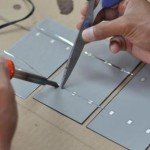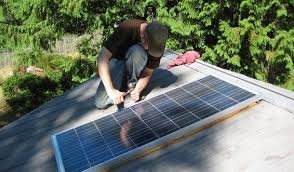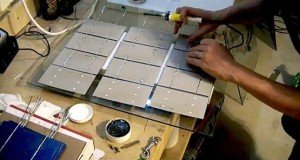
To those that haven’t looked in to it in great depth, to build solar panels seems like an impossible task – one that only Harvard graduates would be able to understand and complete. This couldn’t be further from the truth however, as all that is needed is very east to obtain, and it can all be done in the comfort of a person’s home! So how exactly is this process completed and what exactly needs to be bought to facilitate it?
Well, in answer to the second question, there really isn’t a lot that is needed to make a solar panel – in fact, most of it can already be found in many homes. The only item that will need to be specially bought is a sheet of copper, which can be purchased either online or in a number of specialist shops in any town or city in the United States. This sheet will probably cost around $200, but is the only major expense in the whole project! The other items needed are some plastic bottles, alligator leads and a current meter (this can usually be borrowed from a friend or relative – someone is bound to have one). These items can make up to five solar panels – amazing considering they cost about $2000 dollars each in the shops!
The process to build solar panels is very simple indeed. Once two circular discs have been cut, one should be heated over a stove for a couple of hours and then cooled naturally before moving. Both discs are then placed in to the bottle before being connected to the current meter by the alligator clips. Finally the bottle is filled with salt water (a great conductor) and there it is – one complete solar panel! The current meter should already be showing some movement even when inside, but to test it properly it needs to be placed in a sunny spot in the yard, where the current meter should hit new heights!
The only thing left to do is to place the newly built solar panel in the sunniest part of the yard and secure it so that it does not move during heavy winds. When the connection is complete there should be no need to touch it again, aside from occasionally topping up the salt water inside (obviously when the alligator leads are unplugged).
 Solarfiles.com Solar Power Energy Information
Solarfiles.com Solar Power Energy Information



